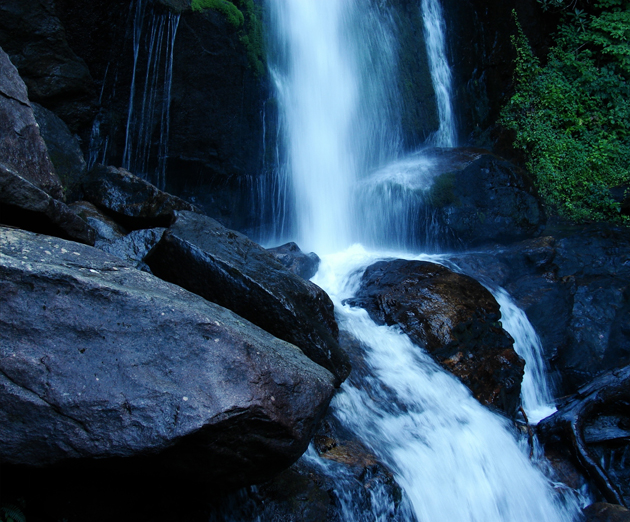Publisher's note: We believe the subject of history makes people (i.e., American people) smarter, so in our quest to educate others, we will provide excerpts from the North Carolina History Project, an online publication of the John Locke Foundation. This one hundred and nineth installment, by Troy L. Kickler, was originally posted in the North Carolina History Project.
Before Sir Walter Raleigh’s expedition landed on the Outer Banks in 1585, French and Spanish explorers traveled across modern-day North Carolina and led the European powers in claiming American land. By the mid-1500s, the Spanish, in particular, were winning the race of conquest. Early Spanish explorers included Luis Vasquez de Allyan, who sailed the Cape Fear River in 1526;
Hernando de Soto, who in 1540 traversed through the southern Appalachian mountains; and Juan Pardo, who led two expeditions from Santa Elena (Tybee Island, Georgia) into the Catawba Valley and then into the mountains of western North Carolina and Eastern Tennessee. During his first expedition, Pardo established good relationships with Indian tribes and searched primarily for food for the Santa Elena settlement. The second expedition’s mission was mainly to find a road to Zacatecas, Mexico (location of Spanish silver mines) and to claim land for Spain.
 South Mountains, southern Burke County, in a geographical oddity and is still as wild as when Juan Pardo explored this most southern and central range of mountains in North Carolina looking for gold almost 450 years ago: Above. photo by Stan Deatherage Click image to enlarge.
South Mountains, southern Burke County, in a geographical oddity and is still as wild as when Juan Pardo explored this most southern and central range of mountains in North Carolina looking for gold almost 450 years ago: Above. photo by Stan Deatherage Click image to enlarge.
The first expedition lasted from December 1, 1566 to March 7, 1567. Pardo and 125 men traveled northward from Santa Elena to find Indian towns with food. After traveling through the swampland of northeastern South Carolina, Pardo stopped at Yssa (near present-day Linville, North Carolina) and then later at Jaora, an Indian town near modern-day Morganton. There, the Spanish explorer and his men constructed Fort San Juan. Pardo and his remaining men (Sergeant Hernando Moyano de Morales and thirty men garrisoned the fort) followed the Catawba River and visited the towns of Quinahaqui (near Catawba) and Guatari (near Salisbury). Along the way, Pardo met with caciques (Spanish term for tribal leader) and through an interpreter informed Indians that they were Spanish subjects. Pardo also left behind his chaplain and a few soldiers to evangelize the Indians. According to anthropologist/historian Charles Hudson and as evidenced by the second expedition, Pardo must have also instructed Indians to build houses for the Spanish troops and to store corn exclusively for Spanish troops. Meanwhile, Sergeant Moyano and his men at Fort San Juan searched for minerals and helped a rival tribe defeat the Chiscas. While Pardo explored, General Pedro Menendez de Aviles feared a French attack and ordered Pardo, unaware of Moyano’s actions, back to Santa Elena. He returned on March 7, 1567.
Impressed with Pardo’s good reports, Menendez ordered a second expedition. On September 1, 1567, Pardo started leading approximately 90 to 120 men back into the Catawba Valley and the mountains of North Carolina--and this time into Tennessee--in search of a road to Zacatecas. During the journey, they were fed by Indians who had stored corn exclusively for Spaniards. Before returning to Jaora, Pardo met with Guatari Mico and Orata Chiquini—two female caciques. After a short stay in the town, Pardo headed for the mountains to assist Moyano. The Spaniard stopped at Tacoe (near Asheville) and at Cauchi (near Marshall) before traveling into East Tennessee, where he found Moyano and his men penned in a fort but unhurt. Later traveling through the Great Smoky Mountains, Pardo, due to a report from a friendly Indian, avoided a surprise attack and decided to return to Santa Elena. On the return, Pardo and his men built two more forts. The second expedition ended on March 2, 1568, when the Spaniards arrived at Santa Elena. Pardo never found a road to Zacatecas, but he did establish rapport with Indian chiefs, built and garrisoned forts, and located crystal deposits—all without losing a man. Even so, Pardo did not help settle LaFlorida for Spain, for the forts were too far inland and the Indians ignored the demands of the few Spanish soldiers who remained behind. Scholars believe the forts were eventually abandoned.
Sources:
David H. Dye, “Pardo Expedition” in Carrol Van West, ed., Tennessee Encyclopedia of History and Culture (Knoxville, 1998); Charles Hudson, The Juan Pardo Expeditions: Exploration of the Carolinas and Tennessee, 1566-1568 (Tuscaloosa, 1990, reprint 2005); Milton Ready, The Tar Heel State: A History of North Carolina (Columbia, 2005); David G. Moore, “Pardo Expeditions” in William S. Powell, ed., Encyclopedia of North Carolina (Chapel Hill, 2006).
By Troy L. Kickler, North Carolina History Project


























